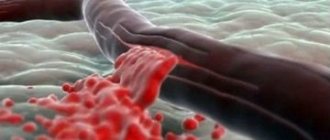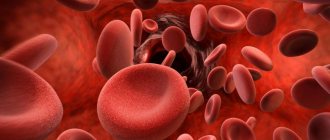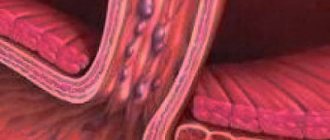What is macrocytic anemia
The presence of macrocytes is a characteristic sign of macrocytic anemia
Macrocytic anemia (macrocytosis) is a type of anemia characterized by an increase in the size of red blood cells of more than 10 microns (according to some authors - from 8 microns). Red blood cells whose size exceeds 12 microns are called megalocytes.
Distinctive features of macrocytes are:
- big sizes,
- decreased concentration of hemoglobin and iron,
- deterioration of the ability to carry oxygen,
- decrease in the number of red blood cells in the blood,
- accelerating the timing of their destruction.
Macrocytic anemia: treatment, symptoms, causes, ICD 10, hyperchromic – My Digestion
The materials are published for informational purposes only and are not a prescription for treatment! We recommend that you consult a hematologist at your medical institution!
Co-authors: Natalya Viktorovna Markovets, hematologist
Hyperchromic anemia occurs in both adults and children. Its peculiarity is the preservation of a high level of hemoglobin while the number of red blood cells decreases. Hyperchromic anemia differs from other types of anemia, and therefore requires a special approach to treatment and prevention.
- What it is
- Causes and types
- Treatment methods
Hyperchromic anemia is a special form of anemia. It differs in the analysis indicators and the nature of its occurrence. It is necessary to consider in more detail the features of this disease.
Reduction in the number of red blood cells in hyperchromic anemia
What it is
First, let's look at what it is. The disease, known as hyperchromic anemia, is characterized by maintaining a high level of hemoglobin while simultaneously reducing the number of red blood cells per unit volume of blood.
Features of the disease
Important: a decrease in the number of red blood cells may be associated with impaired oxygen metabolism and destruction of blood cells due to excessive accumulation of iron.
This type of anemia has the following symptoms:
- pale skin;
- redness of the tongue;
- lowering blood pressure;
- spots before the eyes;
- visual impairment;
- deviations in taste perception;
- numbness of the limbs;
- increased heart rate;
- dyspnea;
- loss of smell;
- weakness;
- irritability;
- gait disturbance.
Symptoms affect the digestive, nervous, and cardiovascular systems, and the disease also negatively affects the entire body. Internal organs suffer, and signs of intoxication may occur. Anemia is especially dangerous for pregnant women, as it affects the development of the fetus.
Causes and types
Hyperchromic anemia is distinguished by the fact that it is provoked directly by internal factors. The causes of the disease may be:
- liver and gastrointestinal diseases;
- problems with alcohol;
- violations of the absorption of vitamins and minerals (folic acid and other B vitamins, iron);
- unbalanced diet;
- pregnancy period;
- chronic diseases;
- poisoning with poisons and toxins;
- tumors;
- influence of drugs;
- improper work and rest schedule;
- congenital malfunctions of the body.
There are several types of this disease associated with a specific cause of development:
- B12-deficient;
- folate deficiency;
- myelodysplastic;
- medicinal.
It will also be useful for you to learn about microcytic hypochromic anemia on our website.
Types of hyperchromic anemia
Macrocytic hyperchromic anemia is characterized by the formation of megaloblasts. These are enlarged red blood cells that are unable to carry oxygen.
The most common pathologies are those associated with a deficiency of vitamins B9 and B12. A thorough blood test and examination of the patient will determine the likely cause of the disorder. Based on the data obtained, the doctor prescribes a treatment regimen.
Treatment methods
Direct treatment of such anemia consists of eliminating health problems that could provoke the disease, as well as correcting the patient’s diet and rest.
The following groups of drugs are prescribed:
- iron-containing medications;
- folic acid;
- injections of cyanocobalamin intramuscularly (vitamin B12).
Additionally, the deficiency of substances is replenished through a special diet. It is necessary to introduce buckwheat, green vegetables and leafy salads, eggs, meat and fish, and milk into the diet.
We also recommend that you pay attention to the article: “Iron deficiency anemia in adults”
It is necessary to eliminate the deficiency of B vitamins, including B12
It is also recommended to give up alcohol, spend more time in the fresh air, and eat large amounts of fresh fruits and vegetables.
Advice: during the treatment period, regularly see your doctor and donate blood to monitor its composition.
If hyperchromic anemia is acquired, with proper nutrition and treatment of diseases of the internal organs, the problem can be overcome in a few months. If you have a congenital form, be regularly examined and monitor your health.
We recommend studying similar materials:
- 1. Autoimmune hemolytic anemia in children: what is missing and how it manifests itself
- 2. Causes and dangers of increased basophil levels in children
- 3. Reasons for an increase or decrease in neutrophils in a blood test in children?
- 4.
Functions and possible causes of pathologies of segmented neutrophils - 5. Low level of total bilirubin in the blood: reasons for the decrease
- 6. Normal bilirubin levels in newborns and children: reasons for the increase
- 7.
Lymphocytes in a child are increased or decreased: causes and consequences of deviations
Source:
Macrocytic anemia: causes, symptoms, diagnosis, treatment
Macrocytic anemia is a type of anemia that causes red blood cells to increase in size. Like other types of anemia, macrocytic anemia means that the red blood cells contain low levels of hemoglobin.
Hemoglobin is a protein containing iron that carries oxygen throughout the body. Deficiency of vitamin B12 or folic acid often causes macrocytic anemia.
Let's look at the causes and symptoms of macrocytic anemia, treatment options and ways to prevent complications.
What is macrocytic anemia?
Macrocytic anemia occurs when the red blood cells are unusually large. A unit of measurement called femtoliter (fl) is used to determine the size of red blood cells. Typically, blood cells are between 80-100 fl in size.
Red blood cells larger than 100 fL are considered macrocintaric. Red blood cells become too large, their concentration in the blood drops and they carry less hemoglobin. This means that the blood is not as rich in oxygen as it should be. Low blood oxygen levels can cause a range of symptoms and health problems.
Source: https://depfsurg.ru/zdorove/makrotsitarnaya-anemiya-lechenie-simptomy-prichiny-mkb-10-giperhromnaya.html
Types of macrocytic anemia
Megaloblast in blood smear
All macrocytoses are divided into 2 large groups:
- Megaloblastic - appear due to a deficiency of microelements and B vitamins. The main laboratory signs of this type of anemia are the presence of megalocytes, destroyed red blood cells in the intracerebral substance, and a decrease in platelet levels.
- Non-megaloblastic - caused by liver pathology. Most often accompany myelodysplastic syndrome.
Also, all macrocytic anemias are divided into forms depending on the level of reticulocytes (precursors of red blood cells) in the blood:
- normoregenerative - the number of reticulocytes is normal;
- hyporegenerative - the concentration of reticulocytes is reduced, and accordingly, there will be an insufficient number of red blood cells in the blood;
- hyperregenerative - increased content of reticulocytes in the blood.
Also, all macrocytic anemias are divided into primary (hereditary, idiopathic) and secondary (symptomatic).
Microcytosis - what is it?
Of the three types of red blood cell anisocytosis, microcytosis is the most common. It is characterized by the presence in the total number of red blood cells of a large number of unnaturally reduced red blood cells.
If microcytosis is detected in blood tests, the doctor may assume that the patient has developed microcytic anemia. That is, it was the main reason for the increase in microcytes in human blood. A specialist must definitely find out the reason for such a deviation, especially if such a phenomenon was not diagnosed before, but was discovered for the first time. Many anemic conditions have this symptom, so differential diagnosis is required.
Certain types of anemia can cause microcytosis. What came first - anemia or a decrease in the size of red blood cells? This question is often asked.
Due to complex biochemical reactions occurring in the body, there is a relationship between the causes of anemia and the appearance of microcytes in the blood. Or hypochromic anemia occurs precisely because of a decrease in the size of red blood cells.
Microcytosis is a common disorder in which red blood cells become small in volume. When examining blood, it is possible to detect a large number of small red blood cells, which is a deviation from the norm.
It is not enough to simply establish the fact of microcytic anemia; it is necessary to identify the cause that led to this disorder. This is especially true during the initial diagnosis. It should be taken into account that microcytosis accompanies various pathologies. Therefore, it is imperative to make a differential diagnosis.
Some types of anemia themselves lead to the development of microcytosis. Therefore, it is important to understand which condition occurred first: anemia or microcytosis. Often, hypochromic anemia develops precisely because red blood cells decrease in size.
Characteristics of the disease
Macrocytosis on blood smear
In hematological practice, macrocytic anemia is diagnosed most often in children of different ages and young women.
Experts have described three main mechanisms for the occurrence of macrocytic anemia in patients of any age.
Enhancing normal red blood cell formation
The precursors of red blood cells, reticulocytes, and their juvenile forms acquire abnormal sizes that exceed those of healthy red blood cells. Oxygen deficiency occurs as enlarged cells lose their ability to transport it. Hypoxia, in turn, is a signal for the hematopoietic system, which intensifies the synthesis of reticulocytes to compensate for the lack of oxygen. Such processes are characteristic of chronic hypoxia and prolonged menstruation.
Changes in membrane properties lead to the death of red blood cells
Increase in the area of the outer membrane of red blood cells
Any pathological condition in which there is an increase in the concentration of blood lipids causes the development of macrocytosis. This occurs due to the fact that lipids “collect” on the surface of red blood cells. Third-party pathological effects on red blood cells lead to an increase in their size, loss of function and rapid death. The rate of synthesis of new red blood cells does not ensure their proper quantity in the blood, since the rate of destruction of macrocytes increases significantly.
DNA synthesis disorder
If, during the process of differentiation of cells of the erythroid series, disruptions in the formation of DNA molecules occur at various stages, the result of such disruptions is the formation of megaloblasts and their circulation in the blood. An example of such anemia is anemia caused by deficiencies of folic acid and vitamin B12.
Prevention methods
To reduce the risk of macrocytic anemia, medical experts recommend taking preventive measures.
The main preventive measure is taking blood cell tests
- Doctors advise visiting a geneticist at least once every 2 months to diagnose the development of anemia.
- There are medications that reduce the risk of this disease.
- To prevent anemia, you need to monitor your diet. It should include the vitamins and minerals necessary for the body. When diagnosing the initial stages, medical specialists will help you create a diet.
- It is recommended to limit the consumption of alcoholic beverages as much as possible; they have a toxic effect on the liver, which increases the risk of developing anemia.
The main preventive measure is taking blood cell tests. This is especially important for those people who have undergone treatment for anemia.
Causes of anemia
Hypothyroidism as a cause of macrocytic anemia
In order for macrocytic anemia to develop in the human body, certain reasons are needed that can change the normal process of hematopoiesis.
The main trigger factors for macrocytic anemia are:
- pregnancy, when the consumption of vitamins and microelements increases;
- unbalanced diet;
- heredity;
- lack of folic acid (vitamin B9), vitamins B, C, copper;
- malignant and benign formations in the liver parenchyma;
- cancer of any location;
- hypofunction of the thyroid gland;
- alcoholism;
- smoking;
- pathology of hematopoietic processes;
- poisoning by poisons, drugs of various groups (especially anticonvulsants, oral contraceptives);
- bleeding;
- hemolytic anemia;
- leukemia;
- myelodysplastic syndrome;
- sideroblastic anemia of an idiopathic nature;
- acute malignant erythromyelosis;
- diseases of the digestive system in which absorption processes are disrupted;
- dysbacteriosis;
- metabolic disorders;
- disruption of iron transport processes;
- congenital diseases characterized by iron deficiency;
- hemodialysis.
Characteristics of states
The key point in the diagnostic search (in relation to macrocytic anemia) is a general blood test (hemogram), or rather, its individual parameters:
- Morphological characteristics of red blood cells (detection of macrocytes, poikilocytosis);
- MCV indicator (mean blood cell volume) - it shows values above 120 femtoliters with macrocytosis of erythrocytes;
- Hematocrit level (in severe vitamin deficiency anemia for a long time, the hematocrit drops to 30-25%, although in other forms of macrocytic anemia it may remain within normal values).
In patients suffering from anemic syndrome for a shorter period of time, the indicator may only slightly exceed the upper limit of normal values or even be within the normal range. Then you will have to take into account other circumstances that could create conditions for the development of macrocytic anemia.
Macrocytosis, caused by the use of chemotherapy drugs or damage to the hepatic parenchyma, is usually mild or moderate. Reticulocytosis with a more or less uniform increase in red blood cells usually also does not raise doubts with the doctor. But with regard to vitamin deficiency conditions, questions always arise. However, the table below will help you compare and evaluate laboratory parameters for different conditions.
| Pathological condition | MCV, fl | Morphological characteristics of cells |
| Megaloblastic anemia HCT (hematocrit) below 30% | 100 — 130 | Hyperchromia, macrocytes, poikilocytosis (ovalocytes, schizocytes) |
| Reticulocytosis (RET more than 10%) | 100 — 110 | Polychromatophilic elements - macrocytes (immature forms) |
| Lesions of the liver parenchyma | 90 — 110 | Macrocytes, uniform increase in cell diameter and volume (all red blood cells are approximately the same size) |
blood for B12 deficiency anemia
- Poikilocytosis of erythrocytes;
- The presence of fragments of destroyed cells in the smear (schizocytosis);
- Hyperchromia;
- Changes in the “white” blood - a significant increase in the content of neutrophilic leukocytes, the nucleus of which has 5 or 6 segments, while normally the number of cells containing more than five segments in their nucleus is unlikely to reach 5% of the total number of segmented neutrophils .
The presence of a huge number of polysegmented neutrophil leukocytes is a kind of equivalent of poikilocytosis of red blood cells and is an important laboratory symptom of megaloblastic anemia.
The appearance of abnormally large formed elements of the erythrocyte series and polysegmented neutrophils in a general blood test indicates, first of all, a disorder of hematopoiesis in the early stages, in the bone marrow (megaloblastic type of hematopoiesis). As a result of megaloblastic hematopoiesis in the bone marrow:
- Cell division is disrupted, at the stage of these processes the cells' nuclear structure, diameter and volume change, and as a result, they unnaturally increase in size (megaloblasts);
- Cells mature at different times - asynchronously: some are already close to mature forms, others have made little progress in their development and remain at the level of promyeloblasts;
- Megaloblasts begin to be prematurely saturated with chromoprotein - hemoglobin, fortunately, the red blood pigment of their increased volume is more than enough, there is somewhere to be located (provided that hemoglobin synthesis is not impaired);
- However, degenerative changes in the nuclei make many cells defective, unable to survive to a mature state.
Thus, ineffective erythropoiesis, “giving life” to giant cells, does not provide them with good “health”. Most of the elements that are destined by nature to become full-fledged red blood cells and perform responsible functions (transport oxygen and carbon dioxide, take part in metabolic processes, play the role of suppressors in immune reactions, etc.
Of course, not all cells will die at the maturation stage; some of them (the most persistent) will remain and enter the bloodstream - in a general blood test they will be represented by abnormally enlarged, mainly hyperchromic, erythrocytes-macrocytes (erythrocyte macrocytosis). In addition, fragments of “former” (dead) red blood cells (schizocytes) will be detected in the erythrogram, creating a picture of poikilocytosis and suggesting the development of hyperchromic macrocytic anemia. However, for a more accurate diagnosis, additional research will be needed.
To prevent the diagnostic search from going down the wrong path, other possible prerequisites for the disease must be studied and taken into account:
- Medical history and previous pathology;
- Family, social, professional, medicinal history;
- Examinations of the head and neck, cardiovascular and nervous system, respiratory system and abdominal cavity.
All these diagnostic criteria are necessary to establish the etiology and form of macrocytic anemia.
Features of the development of anemia
Microcytic anemia is mainly caused by iron deficiency in the human body. With this disease, the size of erythrocytes - red blood cells - decreases due to a decrease in the hemoglobin content in them.
Under normal conditions, these cells range in size from 80 to 100 microns, but with this form of the disease the values are less than 80 microns. In macrocytic anemia, red blood cells enlarge and become larger than 100 microns.
Hemoglobin transports oxygen to all cells, including the brain. If a child suffers from a severe and severe form of anemia, this can have an extremely detrimental effect not only on his physical health, but also on his mental development. The same applies to pregnant women with this disease. A fetus suffering from iron deficiency in utero may be born with numerous developmental defects.
For adults, the disease brings no less problems. Anemia causes weakness, pallor, impaired performance and sleep, and problems with memory. The patient is inactive because he has difficulty recovering from exercise; for example, after jogging, his breathing returns to normal later than a healthy person.
Causes
Possible causes of the disease
With iron deficiency anemia, the body suffers from a lack of iron, which can have different origins and varying degrees of intensity.
The main causes of iron deficiency:
- Congenital deficiency of this microelement.
- Impaired iron transport caused by transferrin deficiency.
- A metabolic disorder that causes a deficiency or complete absence of a microelement.
- Bleeding and partial blood loss of various origins.
- Insufficient intake of iron from food due to poor diet.
The most common cause of the disease, especially in young women, is regular blood loss during menstruation. If a woman eats a normal, balanced diet, and her periods are within normal limits, then the body independently replenishes the deficiency. If the volume of lost blood is very large, and the duration of menstruation is longer than usual, then iron does not have time to return and be absorbed in the required volumes.
Nowadays, the mass obsession with model thinness leads to the fact that young women and girls sharply limit themselves in calories, removing the main products that supply iron from the menu. The same applies to vegetarians, especially their radical faction - vegans, who completely exclude the consumption of food of animal origin.
More information about anemia can be found in the video.
In disadvantaged children and older people, iron deficiency can be caused by malnutrition. Monotonous low-calorie food, lack of the required amount of meat, liver, buckwheat and other foods containing iron, leads to the development of anemia.
Signs
Severe symptoms of microcytic anemia
Symptoms of anemia can be chronic or appear suddenly. Basically, changes in appearance, characterized by pallor, weakness, cold sweat, loss of strength, impaired memory and perception, dizziness and fainting, indicate an acute course of anemia.
This condition is mainly caused by blood loss - hidden or obvious. The cause may be too much menstruation, uterine, gastric or intestinal bleeding, as well as other types of blood loss that can be hidden for the time being, such as hemoptysis in the last stages of pulmonary tuberculosis.
Pale skin, lethargy, reluctance to move actively and play sports, outdoor games, prolonged recovery after exercise may also indicate problems with the blood. However, a final conclusion can only be made based on a blood test.
Methods for treating microcytic anemia
If the onset of the disease is associated with a lack of iron, its normal level must be replaced. If there is insufficiency of this microelement in food products, it is necessary to review the patient’s menu and compose it in such a way that the body receives a normal amount of iron and ensures its full functioning and vital activity.
Signs and symptoms
Tinnitus is a nonspecific sign of anemia
The gradual development of macrocytic anemia in most cases causes the absence of clinical symptoms at the onset of the disease.
As the condition progresses, signs appear that are not strictly specific to macrocytosis itself.
The most common complaints of patients with macrocytic anemia are the following:
- general weakness, weakness, fatigue, increased fatigue;
- weight loss;
- pale skin, which becomes yellow as the health condition worsens;
- dry skin, increased fragility of hair nails;
- loss of appetite;
- drowsiness;
- headaches, dizziness, tinnitus;
- diarrhea alternating with constipation;
- depression, nervousness;
- decreased blood pressure, increased heart rate;
- redness and/or swelling of the tongue (glossitis);
- tingling, discomfort in the upper and lower extremities, especially the fingers;
- memory impairment;
- abdominal pain of various localization and nature;
- dyspnea;
- infertility;
- threat of spontaneous abortion.
“Tingling” in the fingers is a possible sign of megalobeast anemia
Often the course of macrocytic anemia is cyclical, with periods of exacerbations and remissions. This allows a person to “get used” to his condition, which leads to untimely diagnosis and treatment of the pathological condition.
With macrocytosis caused by B12 deficiency, neurological symptoms come first. Patients experience peripheral neuropathies, dementia, and spinal cord destruction.
A distinctive sign of a lack of folic acid and macrocytic anemia in this case is the pronounced exhaustion of patients and retraction of the tissues of the temporal regions of the head.
Symptoms of the disease
Macrocytic anemia, in which red blood cells are pathologically large, is characterized by a nonspecific clinical picture. The main signs of this form of anemia are:
- Fatigue, lethargy, drowsiness. Lack of strength, a constant desire to sleep, as well as an inability to perform simple physical activity often develop with anemia. This is due to a violation of gas exchange in the body, which is normally provided by red blood cells.
- Shortness of breath is a classic symptom of anemia. It is associated with the gradual formation of mild and then severe hypoxia. Oxygen starvation initially occurs only during physical activity, but as the pathology progresses, it can also develop in a calm state.
- Paleness of the skin and mucous membranes. Since the main manifestation of anemia is a decrease in the concentration of hemoglobin, which is red, with the disease the blood ceases to be saturated. This is manifested in the absence of blush and pallor of the gums and conjunctiva of the eyes.
- Severe migraines and dizziness occur with anemia due to the high sensitivity of the brain to a decrease in the concentration of oxygen in the blood. Neurological symptoms only worsen over time, which can lead to serious disturbances of consciousness and fainting.
- Cardiac symptoms in anemia are characterized by a decrease in blood pressure and increased heart rate.
The clinical picture varies from patient to patient and may include several classic manifestations, but non-standard cases also occur. This depends on the severity of the pathological process, as well as on the initial disorder that led to its development.
Diagnostics
Gastroscopy is an instrumental method for diagnosing the cause of anemia
The general diagnostic algorithm for macrocytic anemia is:
- general detailed analysis of peripheral blood,
- general urine analysis,
- blood test for vitamin B12 and folic acid levels,
- gastroscopy.
For macrocytic anemias of a hypo- and normoregenerative nature, differential diagnosis of B12, folate deficiency anemia and myelodysplastic syndrome is carried out. This requires a blood test for B12 and folic acid levels. Quite rarely, a simultaneous decrease in the concentration of two vitamins is observed, which is characteristic of malabsorption syndrome.
If vitamin levels in the blood serum are normal, a bone marrow puncture and cytogenetic study of clonal chromosomal abnormalities are required.
Detection of macrocytic anemia of a hyperregenerative nature requires differential diagnosis between hemolytic and acute posthemorrhagic anemia.
Treatment of pathology
Treatment for various forms of anemia is not the same, since the development of this syndrome has many causes. Treatment of any disease should be aimed at combating its etiology. Macrocytic anemia often develops against the background of cancer and endocrine diseases. However, regardless of the cause that caused the formation of anemia, there are several principles for its treatment:
- Correcting the diet is the basis for successfully combating the disease. A special diet should include meat products, especially liver and eggs, as well as nuts and milk. Active consumption of fruits and vegetables is required. These products are rich in essential vitamins and microelements that support normal hematopoiesis. Folk remedies based on rose hips, currant leaves and St. John's wort will also be useful, since these plants are known for their medicinal properties.
- In cases of severe deficiency of cyanocobalamin and folic acid, medications are prescribed. Multivitamin complexes are often used because of their iron content, which is used by the body for normal hematopoiesis.
- Severe macrocytic anemia requires blood transfusion. Blood transfusions are carried out in medical institutions and help combat clinical manifestations.
- Symptomatic therapy includes the use of painkillers, agents for stimulating erythropoiesis, hemostatic agents, oxygen therapy and other methods of combating pathology.
Treatment of macrocytic anemia should be prescribed by a doctor based on the studies performed.
Treatment of macrocytic anemia
Treatment is aimed at the identified cause of anemia
Treatment of macrocytosis can be carried out at home or in the hospital, which depends on the severity of the pathological process and the risk to the life of patients.
The main therapeutic approaches to eliminating pathology are as follows:
- injection administration of B12, B9;
- diet with increased animal proteins;
- symptomatic treatment;
- refusal of nicotine and alcohol;
- blood transfusions;
- bone marrow transplantation.
The success of treating macrocytic anemia is directly proportional to the successful treatment of the underlying causes of macrocytosis.
Treatment
In most cases, vitamin injections are the first line of treatment for anemia. Injected vitamins ensure that the body gets them even if a disease such as celiac disease prevents the vitamin from being absorbed.
Eating more foods containing vitamin B12 may improve symptoms if a person is deficient in the vitamin due to diet.
Other treatment options include:
- changing medications when the drug affects vitamin absorption;
- taking medications for certain autoimmune diseases or liver diseases;
- taking medications for thyroid disorders;
- lifestyle changes such as quitting alcohol;
- blood transfusion or bone marrow transplantation for bone marrow problems.
Possible complications
Folate deficiency adversely affects fetal development
Like any pathological condition, macrocytic anemia with delayed diagnosis and lack of adequate therapy can cause a number of complications.
Lack of hemoglobin leads to oxygen deficiency. The body tries to compensate for this condition by increasing blood flow to tissues and organs. At the same time, the heart rate increases and blood pressure becomes unstable. Constant wear and tear of the heart leads to the formation of heart failure, enlargement of the heart (cardiomegaly), and severe arrhythmias. Any of these complications can result in death at any time.
Also, the progression of macrocytic anemia can lead to complications such as cirrhosis and liver cancer, liver failure, and atherosclerosis.
A deficiency of cyanocobalamin (B12) can cause the following complications:
- infertility,
- malignant processes of the gastrointestinal tract,
- abnormal development of the nervous system in the fetus,
- amnesia.
A lack of folic acid can lead to:
- heart and vascular diseases,
- placental rupture,
- untimely delivery,
- carcinoma of the digestive tract,
- abnormalities of fetal development.
Diagnostic procedures
The main method for diagnosing all blood diseases, including macrocytic anemia, is hematological tests. A general clinical blood test allows you to evaluate the number of red blood cells and the distribution of hemoglobin in them. A decrease in cell content and a decrease in the concentration of the main protein indicates the development of anemia, but there are many differential diagnoses.
Determining the cause of the development of such a pathological syndrome requires additional research, the list of which is determined individually in each case. Ultrasound is used to exclude lesions of the liver and spleen, a blood test for hormones is required to detect insufficiency of thyroid function, and gastroscopy is prescribed if gastrointestinal diseases are suspected.
A hematologist diagnoses macrocytic anemia based on a blood draw. The main factors indicating anemia are the rapid breakdown of red blood cells and changes in their diameter. To determine the cause of anemia, diagnostic procedures are prescribed:
- Repeated blood sampling and urine analysis are performed.
- The patient is tested for the concentration of vitamin B12 in the body.
- Doctors order a bone marrow biopsy.
This is not the entire list of procedures that the patient will have to undergo. The doctor needs to establish the cause of the disease, the course of treatment depends on this.
Prevention
Regular visits will help avoid complications during pregnancy
The main principles for the prevention of macrocytic anemia are a complete balanced diet, rich in animal proteins, systematic monitoring of blood tests and the content of vitamins B12 and B9, monitoring of the general condition and well-being (especially in hereditary forms), and proper management of pregnancy.
Timely diagnosis, treatment and preventive measures will allow you to reliably monitor your health status and avoid the development of complications.
Hyperchromic anemia: causes, symptoms, treatment methods
The materials are published for informational purposes only and are not a prescription for treatment! We recommend that you consult a hematologist at your medical institution!
Co-authors: Natalya Viktorovna Markovets, hematologist
Hyperchromic anemia occurs in both adults and children. Its peculiarity is the preservation of a high level of hemoglobin while the number of red blood cells decreases. Hyperchromic anemia differs from other types of anemia, and therefore requires a special approach to treatment and prevention.
- What it is
- Causes and types
- Treatment methods
Hyperchromic anemia is a special form of anemia. It differs in the analysis indicators and the nature of its occurrence. It is necessary to consider in more detail the features of this disease.
Reduction in the number of red blood cells in hyperchromic anemia
Difference between macrocytic and microcytic anemia
Macrocytes and microcytes in a blood smear
The main difference between micro- and macrocytic anemia is the size of the red blood cells. If with microcytosis the size of red blood cells is less than 8 microns, then with macrocytic anemia it will be 8-10 or more.
Also, a distinctive feature of some forms of macrocytic anemia will be the detection of megalocytes - red blood cells with a size of more than 12 microns.
The conditions differ from each other in their causes, course, and clinical manifestations. Macrocytosis is most often caused by a lack of vitamins B12 or B9, and microcytosis is caused by a lack of iron.
In general, each of these conditions requires constant monitoring, assessment of the treatment, the dynamics of the underlying disease and the implementation of all medical recommendations.
What other anemias exist?
In addition to iron deficiency anemia, depending on the size of the red blood cell and color, other hematological pathologies are distinguished:
- Hemoglobinopathy (thalassemia, Minkowski-Choffard disease, hereditary microspherocytosis, hemoglobinopathy H).
- Sideroblastic microcytic anemia is a pathological condition in which iron metabolism is disrupted. With such anemia, there is a frequent manifestation of microcytosis, hypochromia, decreased levels of iron in erythrocytes, increased levels in the blood (due to the fact that this element is not taken up by the bone marrow to produce hemoglobin). The pathology can be acquired, which often develops in adults and accompanies other diseases (with inflammatory processes, malignant tumors, chronic alcoholism), and hereditary (a defective gene is located on the X chromosome).
- Anemia associated with exposure to chronic infection.
- Anemic condition due to poisoning with heavy metal salts, in particular lead, which negatively affects the utilization of iron and the production of hemoglobin. Characteristic signs of such a pathology will be microcytes, hypochromia, coarse intracellular inclusions (Jolly bodies, basophilic granularity, Cabot rings) found in the blood.
- Rare types of hypochromic microcytic anemia - the causes of their occurrence are due to congenital abnormalities in iron metabolism, disturbances in the processes of transport and recycling of this valuable element, and the lack of iron-binding protein.
What is macrocytosis?
A general blood test is necessary for many diseases, one of them is microcytosis. This is a condition of the body in which the level and size of red blood cells (erythrocytes) are below normal, which indicates the presence of anemia.
The following describes what it is and what such deviations can lead to.
Blood is the most important component of any living organism, which is represented by liquid tissue and consists of plasma and formed bodies (leukocytes, erythrocytes, platelets). The function of the circulatory system is to connect and nourish absolutely all organs of the body, so it is very important to monitor the condition of the blood by conducting regular clinical tests.
Based on the results of a laboratory blood test, a specialist can judge the functional disorders of the body.
A large number of red blood cells with sizes greater than 9 microns (macrocytes) allows us to suspect macrocytosis in the patient.
Normocytes are cells with a size of about 7.1-9 microns. Microcytes measure up to 6.9 microns. Macrocytes are represented by cells with a size of 8 microns. And megalocytes have sizes from 12 microns.
With normal red blood cell counts, the blood contains about 70% of the total number of normocytes. Macro- and microcytes occupy a niche of 15%. If the analysis shows an increase or decrease in the content of one or another type of element, then this is already a sign of developing disorders in the body, and therefore the RDW value also increases. This is called anisocytosis.
An increase in RDW can be recorded during the treatment of anemia, even at the initial stages. The picture changes as soon as the first stage of therapy is completed.
That is, if we explain it in simpler terms, then with anisocytosis the qualitative composition of erythrocytes changes significantly, in which normocytes are replaced by micro- and macrocytes. The main difference between the pathology is expressed in the violation of the correct ratio of different sizes of red blood cells. This deviation is determined by a general blood test (CBC).
Even with minor micro-changes in the composition of the blood, it is necessary to carry out a number of additional diagnostic manipulations of laboratory and hardware type (blood, urine, stool tests, MRI, CT, and so on, depending on which diagnosis needs to be clarified) to exclude more serious diseases. Microcytosis is most often associated with anemia, in which the hemoglobin content in all red blood cells is noticeably reduced. Therefore, it is necessary to periodically monitor the condition, which will exclude more serious diseases.
Based on the results of a laboratory blood test, a specialist can judge the functional disorders of the body.
In some cases, red blood cells may be found in human blood, the size of which deviates from the norm (68 microns) up or down. Large red blood cells are called macrocytes, and the process of changing cell size is called macrocytosis.
This condition is a sign of the development of certain types of anemia in the patient, including those caused by a lack of vitamin B12 or folic acid in the body or an increase in the rate of red blood cell formation.
As in the case of red blood cells, platelets have the same condition - the presence in the blood of a large number of immature (and therefore defective) platelets, the size of which is beyond the upper limits of normal. At the same time, the average volume of platelets in the blood increases. This condition has a number of signs:
- fatigue, lack of energy, increased fatigue;
- shortness of breath, respiratory dysfunction;
- increased heart rate (in any condition);
- pallor of the skin, mucous membranes, nails (sometimes the skin may acquire a blue tint).
The presence in the blood of both abnormally large and unnaturally small red blood cells (macrocytes and microcytes) is a condition called anisocytosis. A condition such as anisocytosis has 3 degrees:
- anisocytosis of the first degree - deviation from the norm in the size of the erythrocyte (in one direction or another) is observed in 30-50% of the total number of cells;
- anisocytosis II degree - deviation in 50-70% of cells;
- Anisocytosis III degree - more than 70% of macro- and/or microcytes.
As a rule, such macrocytosis as red blood cells does not manifest itself in any way and is detected only during a clinical blood test, when other diseases are treated.
Macrocytosis (both red blood cells and platelets) is not a disease, but only a sign of pathological processes occurring in the human body. This condition can be caused by a number of reasons, which can only be determined by a doctor based on test data and a more detailed examination.
The causes of this condition in the case of red blood cells:
- deficiency of vitamin B9 and/or B12;
- anemia caused by blood loss (posthemorrhagic);
- anemia that developed due to the destruction of red blood cells (hemolytic);
- bone marrow pathologies;
- oncological diseases (usually blood cancer);
- functional disorders of the thyroid gland;
- chronic alcoholism;
- diseases of the hematopoietic organs;
- pregnancy;
- use of certain medications.
A general blood test is necessary for many diseases, one of them is microcytosis. This is a condition of the body in which the level and size of red blood cells (erythrocytes) are below normal, which indicates the presence of anemia. The following describes what it is and what such deviations can lead to.
A blood test is essentially a picture of a person’s health, completely describing all the difficulties in the body’s functioning, all existing problems. Microcytes present in the blood should become an alarm bell for a person, evidence of the development of very serious diseases.
The appearance of microcytes in the blood: what does this mean for health?
Microcytes - what they are, and in what diseases they appear - these are the questions that patients most often ask themselves when making a diagnosis. A standard blood test helps detect the presence of microcytes, and therefore diagnosis rarely raises questions.
So, what are microcytes? Essentially, these are reduced red blood cells that are 4-6 times smaller than their normal size. They can be formed either from small erythroblasts in the bone marrow, or during the breakdown of the red blood cells themselves as they pass through the bloodstream.
The appearance of microcytes is a clear sign of the development of anemia of a very different nature. Anemia of the brain, liver, as well as anemia during pregnancy - all these diseases initially manifest themselves in the form of the appearance of these microscopic formations. It is believed that these formations appear in the early stages of the disease, so such a symptom should never be ignored. With its help, you can easily detect the disease in time, preventing its further development.
Microcytes also appear very often during pregnancy, and usually, these formations can do a lot of harm to the fetus. That is why doctors recommend donating blood as often as possible during pregnancy in order to detect disturbances in the body’s functioning in time.
Another common cause of microcyte formation is hemolytic jaundice. Typically, such a dangerous disease develops quickly and additionally manifests itself in the form of elementary external signs.
A feverish state, prolonged and continuous exposure to high temperatures, deliberate fasting - everything that causes the appearance of microcytes. Since there can be many reasons for the appearance of these neoplasms, specialists, when they are detected, usually prescribe a whole course of tests and procedures. This helps to identify the disturbing disease in time and eliminate it. In fact, the question “microcytes - what are they” is quite simple to solve, and it is much more difficult to determine the cause of their occurrence.
One of the most dangerous causes of the appearance of microcytes is iron deficiency anemia. This disease is characterized by a chronic lack of iron, associated either with the physiological characteristics of the body or with regular blood loss (as, for example, with a stomach ulcer). This disease manifests itself in the form of several obvious symptoms, such as constant dizziness, nausea, fatigue, and shortness of breath.
How to get rid of microites in the blood
Microcytes are quite harmful formations, the appearance of which in the blood may indicate the development of a whole group of diseases. They get rid of these formations using a whole range of medications.
Of course, the treatment algorithm is different in each case, and it all depends on the disease that caused the abnormalities in the blood test. Sometimes the cause of microcytosis can be poor nutrition and frequent alcohol abuse. In this case, doctors prescribe a special diet in which all foods are rich in iron and vitamins B and C.
If the disease progresses, then you can get rid of it only with the help of special medications. In especially severe cases, these medications are administered to a person intravenously, which only facilitates their absorption.
It is also interesting that the question “microcytes in the blood - what are they” is not the only one that is popular among patients. Another popular diagnosis after a blood test is macrocytosis. Macrocytes, unlike microcytes, are 8-10 times larger in size than standard red blood cells. The appearance of macrocytes is a dangerous symptom indicating the development of leukemia and parnicious anemia. Coping with such a disease is even more difficult than with the formation of microcytes.
Microcytic anemia in childhood
The parameters of the hemogram must be under control; it is mandatory for a growing organism.
Hypochromia and microcytosis during a general blood test, together with other signs of trouble (excessive weight gain or loss, an unnatural need to taste and even eat inedible foods, changes in behavior, decreased concentration) indicate that the child has anemia, which arose due to insufficient iron levels. After all, the synthesis of hemoglobin (red blood pigment) depends only on this chemical element.
It is also a carrier of oxygen through tissues and organs, and when it decreases, unpleasant symptoms characteristic of anemia occur.
Signs
Microcytic anemia is characterized by a decrease in the size of red blood cells, and macrocytic anemia is characterized by an increase in their relative size. These are external manifestations of the problem. As for the main difference, it lies in the cause that provokes the occurrence of the disease.
In a form of anemia accompanied by a decrease in the size of red blood cells, the cause is a lack of iron. The lack of this microelement provokes a deficiency of oxygen in the blood and, as a result, all organs and systems of the body suffer.
The cause of this disease may be improper or insufficient nutrition, diseases of the gastrointestinal tract, increased absorption of vitamin B12 by excessively progressive intestinal microflora.
If microcytic anemia is more common in children and young people, then its macrocytic form is more common in old age. In both cases, manifestations of anemia associated with malnutrition are successfully treated with a normal, balanced diet. Only in cases where the disease is caused by pathologies in the body, specialized medications are required.
In order to determine any type of anemia, children need to have their blood tested from time to time. This study is performed as part of age-related medical examination, or more often, as the need arises.
Symptoms that may suggest anemia:
- Distortion of taste, desire to eat unusual foods.
- Behavioral disorders: excessive apathy, decreased activity, increased fatigue.
- Weight loss.
- Mental retardation.
Most often, iron deficiency anemia is diagnosed in children with such symptoms. The lack of this microelement leads to a decrease in the level of hemoglobin in the blood, which provokes hypoxia of tissue organs of varying severity.
To prevent the development of anemia in childhood, it is necessary to monitor the child’s nutrition. The menu should be designed in such a way that the baby’s body does not experience a deficiency in essential minerals and vitamins.
Children who are breastfed are less likely to become anemic than children who receive cow's or goat's milk. After complementary feeding, you need to gradually include foods that are a source of iron in your baby’s diet. Naturally, according to the age requirements of the body.
If a child develops microcytic anemia, then it is necessary to consult a doctor and have his blood tested. The main sign of trouble is a decrease in the level of hemoglobin in the blood.
Treatment of microcytic anemia requires timely treatment. It is necessary to adjust the patient's menu.
Provided that the disease develops against the background of chronic blood loss, it must be stopped. In women, heavy menstrual bleeding often leads to the development of anemia. Therefore, all patients should be examined by a gynecologist. Sometimes treatment of the digestive system is required. For this, a gastroenterologist is involved.
Often, the doctor prescribes iron supplements. Whenever possible, preference is given to taking medications orally. Injecting iron carries a risk of allergic reactions and also produces many side effects. Self-medication is unacceptable, since excess iron in the body poses no less a threat than its deficiency.
Author of the article: Shutov Maxim Evgenievich | Hematologist
Education: In 2013, he graduated from Kursk State Medical University and received a diploma in General Medicine. After 2 years, he completed his residency in the specialty “Oncology”. In 2020, she completed postgraduate studies at the National Medical and Surgical Center named after N. I. Pirogov.
Other doctors
‹
Delicious and very healthy salad “Metelka” - the best recipes
15 healthiest foods for the heart and blood vessels
›
How is it treated?
The principle of any course of treatment is to eliminate the root cause of the disease, and then get rid of anemia. The main methods that make it possible to forget about macrocytic anemia are the following:
- Transfusion of blood cells.
- Injections of B vitamins.
- Drawing up a special diet based on the consumption of animal proteins.
Treatment is carried out on an outpatient and inpatient basis. It all depends on the stage of development of anemia and the clinical manifestations of the pathology. For patients with a hereditary form of anemia, the medical specialist calculates the dosage of Cyanocobalamin, which must be taken throughout life. In case of individual intolerance to the drug, it is changed to a similar one.
Prognosis and possible complications
The danger of macrocytic anemia is that the organs are supplied with oxygen for some time, despite the anemia that has occurred. During this time, the disease enters an advanced stage.
Measures not taken in a timely manner can lead to oxygen starvation, which in turn causes degeneration of organs and tissues.
Primary macrocytosis cannot be completely cured, but with certain preventive measures you can maintain your body in a stable condition.
What does low iron entail?
When the level of iron in the body decreases, the following biochemical reactions will follow:
- decreased reserves of heme-forming components in the bone marrow and liver tissue;
- decline in secretion and level of ferritin (the main iron-depositing protein);
- increase in serum total iron-binding capacity of blood;
- an increase in the level of free erythrocyte protoporphyrins, which have nothing to combine with to form heme;
- decline in the activity of iron-containing enzymes inside cells.
As the pathological decrease in iron in the blood progresses and, accordingly, the level of hemoglobin falls, the color of the red blood cells will change more and more, their size and external outline will decrease. Ultimately, this will lead to deformation of red blood cells, their transformation into microcytes. And along with microcytosis, hypochromia and poikilocytosis will be observed in red blood cells.
This will all be reflected in the hemogram and biochemical blood test. A reduced hemoglobin level, altered serum iron levels, erythrocyte indices will change, hypochromia and microcytosis will appear in the general blood test - all this will confirm the development of hypochromic microcytic anemia.
Of course, there is no complete certainty that a child or an adult has developed iron deficiency anemia.
Therefore, the pathological condition must be differentiated from other types of anemia. For example, it can be caused by lead poisoning (with basophilic inclusions in erythrocytes, increased levels of lead in the blood serum, the appearance of free erythrocyte protoporphyrins and captoporphyrins in the urine). It could also be thalassemia (it can be suspected if there is an increase in HbA2, HbF in the blood). If microcytic anemia is diagnosed, treatment should be timely.











